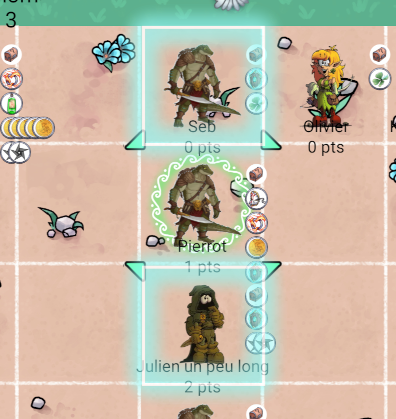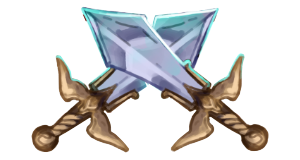
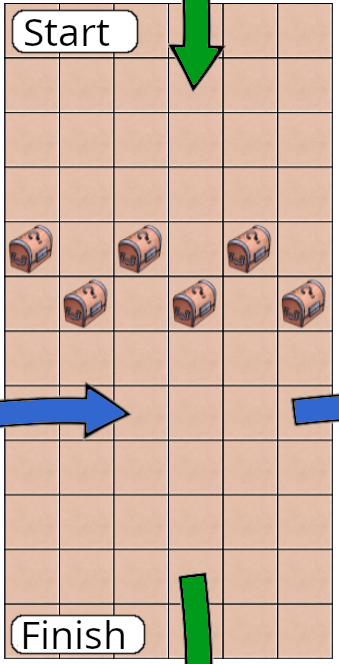 A game is a race between the different competitors, who move towards the finish line (at the bottom of the board).
A game is a race between the different competitors, who move towards the finish line (at the bottom of the board).
When a player reaches the bottom and crosses the line, he returns to the top of the board and begins another round: the
bottom and the top of the board wrap around (as do the left and right edges).
The image opposite shows a game board with the start line and the finish line. The arrows illustrate that the top/bottom
and left/right edges of the board wrap around.
Your goal is to have the most points at the end of the game..
Points are earned and lost in the following ways:
Each game lasts a certain number of game turns (between 5 and 15). The number of laps is indicated at the top left of the screen.
e careful, we are talking about rounds of play here and not rounds of the track.


Several types of dice are used during a game:
 6-sided dice, denoted "D6".
6-sided dice, denoted "D6".
The opposite faces are: 1-6, 2-5, 3-4.
 3-sided dice, denoted "D3".
3-sided dice, denoted "D3".
The opposite faces are 1-3.
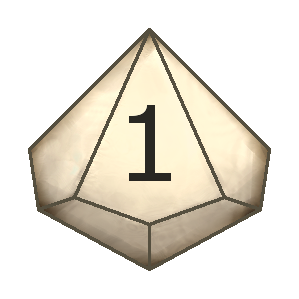 10-sided dice, denoted "D10".
10-sided dice, denoted "D10".
The opposite faces are 1-10, 2-9, 3-8, 4-7, 5-6.
 The "combat" die", used to obtain the result of a confrontation, denoted "DCOMBAT"
The "combat" die", used to obtain the result of a confrontation, denoted "DCOMBAT"
It has three faces: defeat, simple victory, overwhelming victory.
Note: behind this die is actually a 100-sided die, whose opposite sides are: 1-100, 2-99, 3-98, etc.
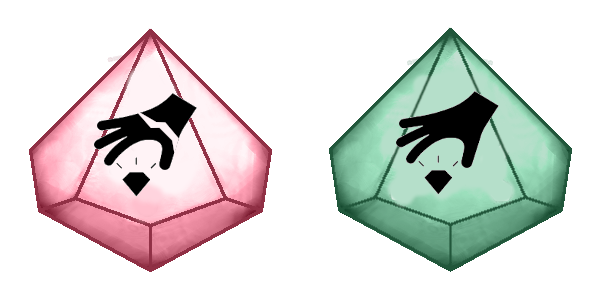 The "theft" die, allowing the thief to try to steal objects from his opponents, denoted "DTHEFT"
The "theft" die, allowing the thief to try to steal objects from his opponents, denoted "DTHEFT"
It has two sides: successful theft, failed theft.
Note: behind this die is actually a 100-sided die, whose opposite sides are: 1-100, 2-99, 3-98, etc.
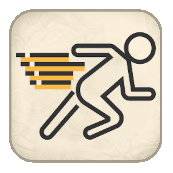 Le dé "rapide", utilisé en phase de déplacement par les personnages ayant la règle spéciale "rapide", noté "DRAPID"
Le dé "rapide", utilisé en phase de déplacement par les personnages ayant la règle spéciale "rapide", noté "DRAPID"
Il possède quatre faces : 2, 3, 4, 5 et les faces opposées sont 2-5, 3-4.
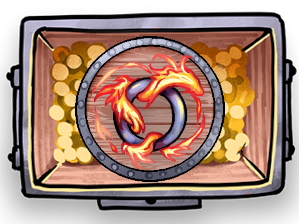 The "object" die, used to obtain a magic object after recovering a chest, denoted "DOBJ".
The "object" die, used to obtain a magic object after recovering a chest, denoted "DOBJ".

Important note: all players who have not yet taken their first turn are protected:
they cannot be targeted (by objects) or attacked in melee. To represent this, their character is displayed as
transparent on the game board.
In the first turn of the game, the order of play is random.
From the second round, the players play in order from last place to first (the player with the fewest points goes first,
the one with the most plays last).
A game turn consists of three phases:

 and advances in a straight line by the number of
spaces indicated by the die of their choice.
and advances in a straight line by the number of
spaces indicated by the die of their choice.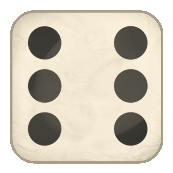

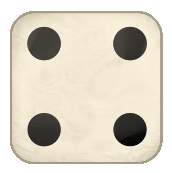
 : lucky!
: lucky! (see below for effects).
(see below for effects).

 : lucky sprinter!
: lucky sprinter! due to the double.
due to the double.
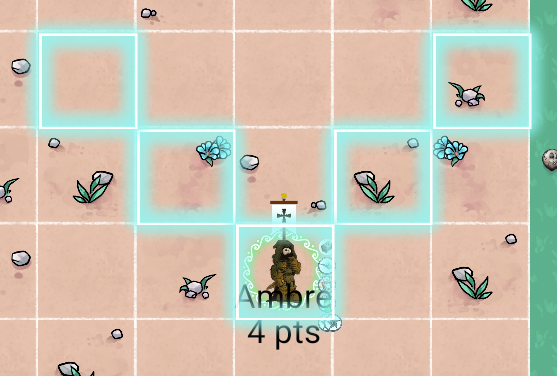
 :
the player can decide to use one or more of the
:
the player can decide to use one or more of the  : 1 box
: 1 box
 : 3 squares (=1+2)
: 3 squares (=1+2)

 : 6 squares (=1+2+3)
: 6 squares (=1+2+3)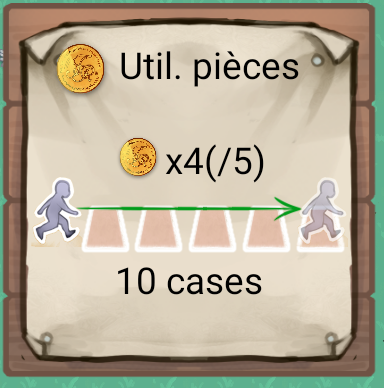
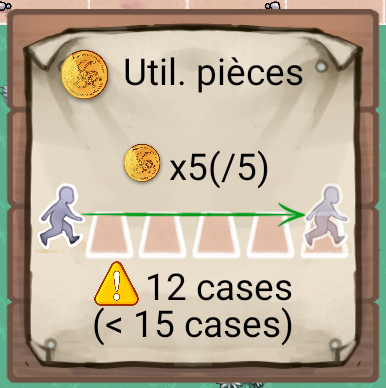


When a player ends a move on a square occupied by an opponent, a fight is triggered.

The application determines which player is the attacker and which player is the defender.
The moving player is the attacking player EXCEPT in the following cases:
In these cases, the player occupying the square before the move is the attacker.
The attacker rolls the combat die to find the result:
 Defeat (red side, 40% chance*):
the attacker loses the fight. The defender wins it and inflicts a
Defeat (red side, 40% chance*):
the attacker loses the fight. The defender wins it and inflicts a 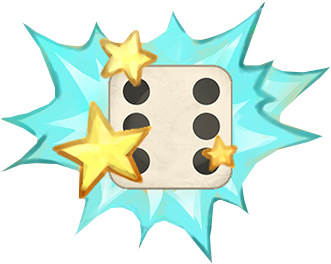 on the attacker.
on the attacker.
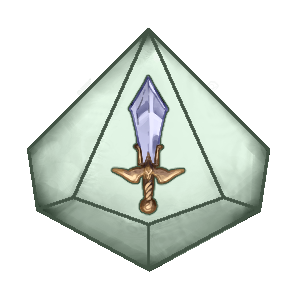 Simple victory (light green side, 40% chance*):
the attacker wins the fight and inflicts a
Simple victory (light green side, 40% chance*):
the attacker wins the fight and inflicts a  on the defender.
on the defender.
 Crushing victory (dark green side, 20% chance*):
the attacker wins the fight and inflicts a
Crushing victory (dark green side, 20% chance*):
the attacker wins the fight and inflicts a 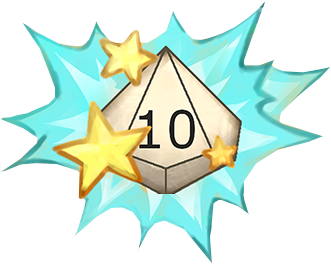 on the defender.
on the defender.
* The probabilities of defeat / simple victory / crushing victory are modified by each character. See "Characters" below.
In addition to inflicting a shock on the vanquished, the winner of a fight obtains a tactical move allowing him to move one space to the right or to the left.
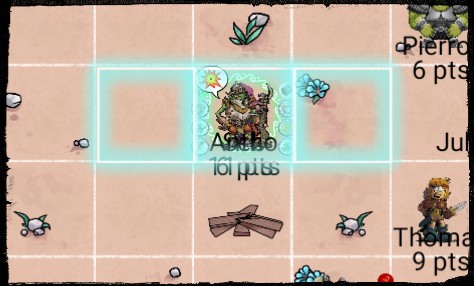

There are two types of shocks, both of which cause the player taking them to recoil.
When a player suffers a shock, he rolls a die in order to see the space to which he is retreating:
 Small shock:
possibility to move back one or two squares, and to shift one column to the right or to the left.
Small shock:
possibility to move back one or two squares, and to shift one column to the right or to the left.
 and step
back to the space associated with the result.
and step
back to the space associated with the result.
 Big shock:
possibility to move back one to four squares, and to shift one column to the right or to the left.
Big shock:
possibility to move back one to four squares, and to shift one column to the right or to the left.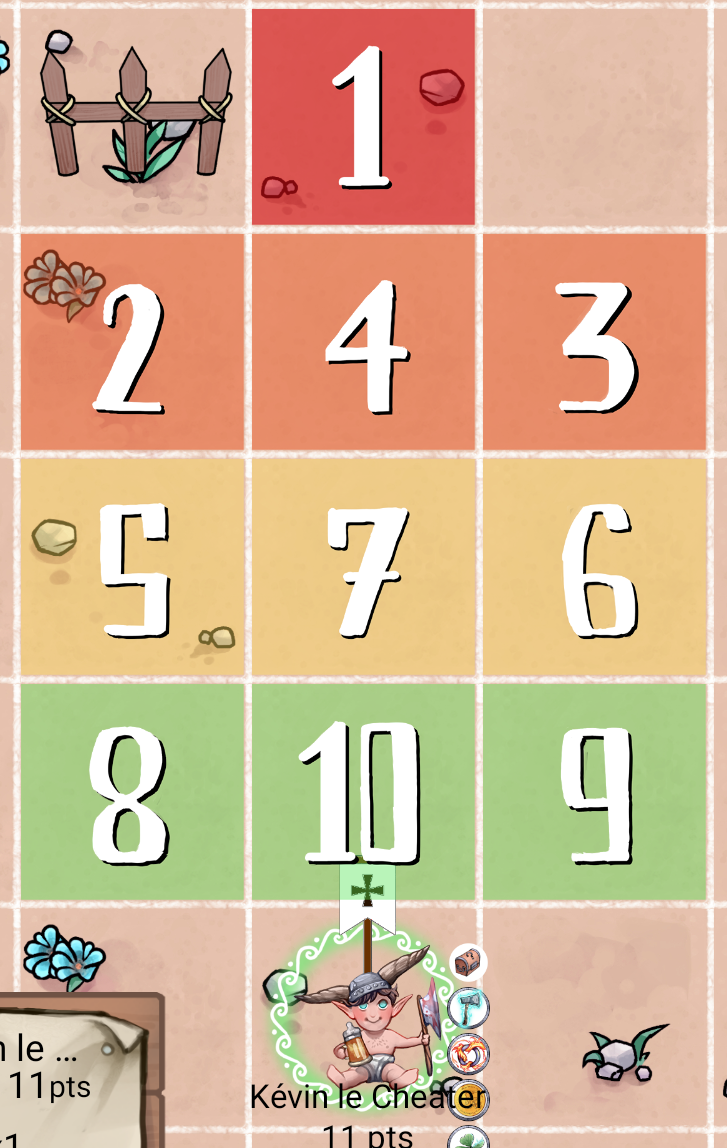
 and move back to the space associated with the result.
and move back to the space associated with the result.
If a shocked player has a shield, he can use it.
In this case the shock is ignored but the player loses 2 points. If the
shield
is not used, the player keeps it and the shock is suffered.
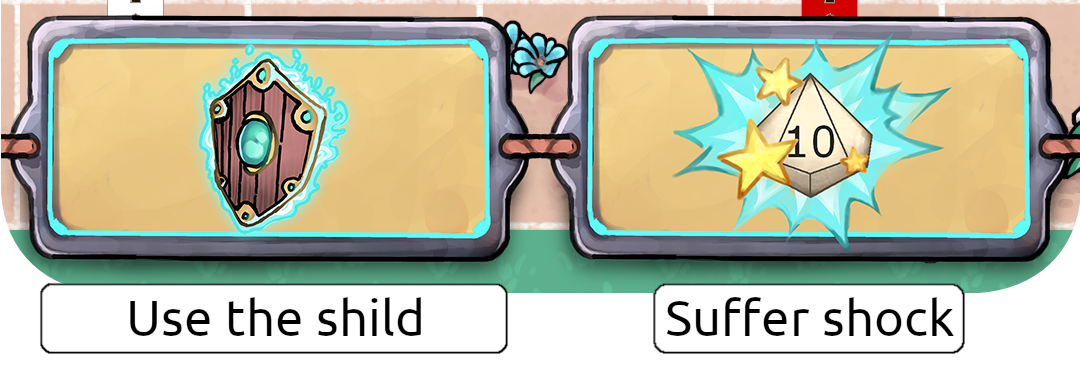

Five types of obstacles can be found on the game board.
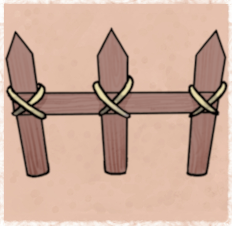
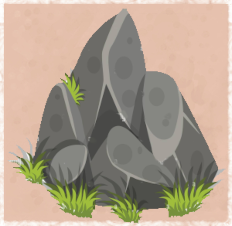

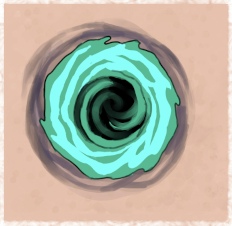
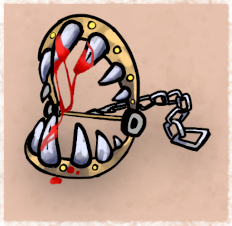
Example of the protection conferred by barriers and rocks:

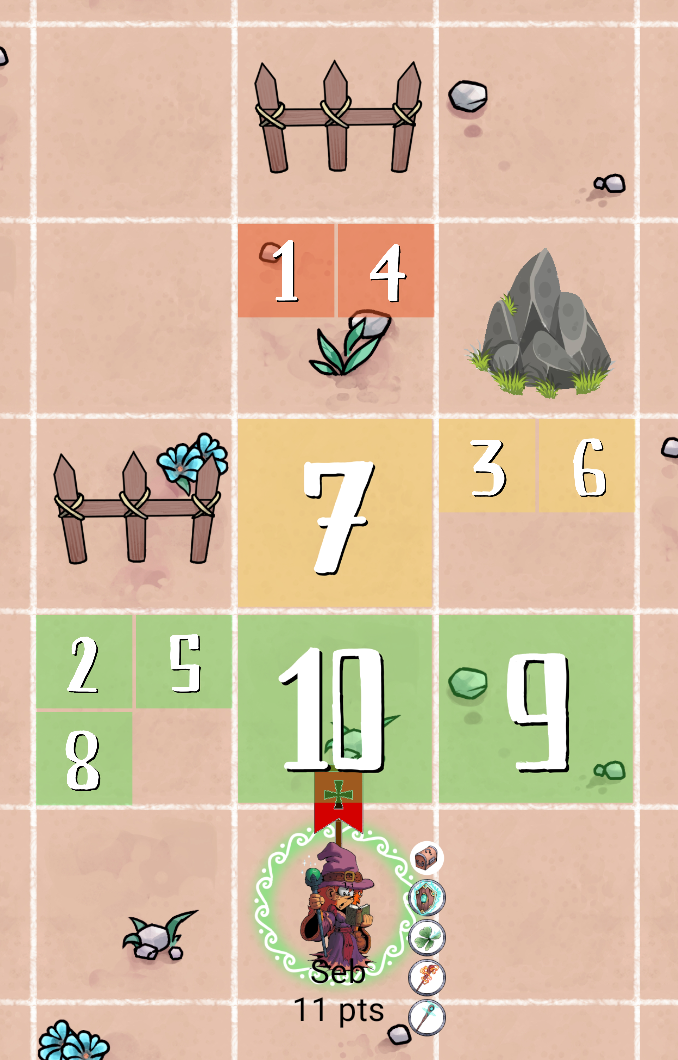

Différents objets peuvent se trouver sur les cases du circuit :

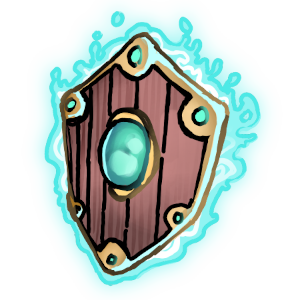

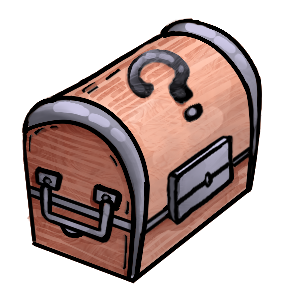
Lorsqu'un joueur passe (ou termine son déplacement) sur un trèfle
 / un
/ un bouclier
 / une
/ une pièce d'or
 , il reçoit directement l'objet dans son inventaire.
, il reçoit directement l'objet dans son inventaire.
Lorsqu'un joueur passe (ou termine son déplacement) sur un coffre ,
son mouvement est interrompu le temps de résoudre la prise de l'objet magique.
,
son mouvement est interrompu le temps de résoudre la prise de l'objet magique.
Pour ce faire le joueur lance le DKDO  , qui indique l'objet obtenu. Si le joueur possède un
, qui indique l'objet obtenu. Si le joueur possède un trèfle
 ,
il peut l'utiliser pour modifier l'objet qu'il obtient.
,
il peut l'utiliser pour modifier l'objet qu'il obtient.
Une fois pris par un joueur, l'objet ou le coffre disparait du plateau de jeu (l'icône devient grisée).
Mais cela n'est généralement pas définitif : au début de plusieurs tours d'une partie, tous les objets et coffres réapparaissent. Ces tours sont indiqués
en haut à gauche de l'écran.

le magearbitre aime les courses à suspense. Du coup, il favorise les joueurs à la traine et pénalise ceux en tête.
En terme de jeu cela signifie que les joueurs ayant le plus de points obtiennent des objets moins intéressants, et ceux ayant le moins de points obtiennent
davanatage d'objets puissants. Ce bonus / malus est symbolisé par l'icône "coffre" située à droite de chaque personnage :
 : bonus maximum, la plupart des objets obtenus seront puissants
: bonus maximum, la plupart des objets obtenus seront puissants : bonus intermédiaire, beaucoup d'objets obtenus seront puissants
: bonus intermédiaire, beaucoup d'objets obtenus seront puissants : ni bonus ni malus, tous les objets peuvent être obtenus
: ni bonus ni malus, tous les objets peuvent être obtenus : malus intermédiaire, beaucoup d'objets obtenus seront peu puissants
: malus intermédiaire, beaucoup d'objets obtenus seront peu puissants : malus maximum, la plupart des objets obtenus seront peu puissants
: malus maximum, la plupart des objets obtenus seront peu puissants
Voici les différents objets pouvant être obtenus dans les coffres et leurs effets :
Note : tous les objets ayant des "cibles" peuvent cibler les adversaires (pour infliger un choc) ou les barrières et les pièges (pour les détruire)
 Anneau de feu :
Anneau de feu : 
 cases.
cases. , le joueur sur la dernière case du parcours de la
boule de feu subit un
, le joueur sur la dernière case du parcours de la
boule de feu subit un  . Les barrières et pièges sur la trajectoire sont détruits.
. Les barrières et pièges sur la trajectoire sont détruits.
 Anneau de foudre :
Anneau de foudre : 
 : l'ensemble des joueurs recule en ligne droite d'un nombre de cases égal au premier D3. Le(s)
joueur(s) en tête de course recule(nt) en plus du second D3.
: l'ensemble des joueurs recule en ligne droite d'un nombre de cases égal au premier D3. Le(s)
joueur(s) en tête de course recule(nt) en plus du second D3.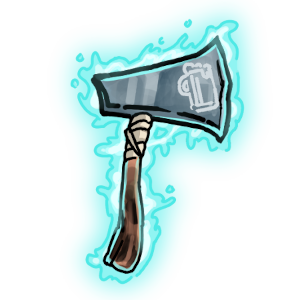 Hache de jet magique :
Hache de jet magique : 
 cases.
cases.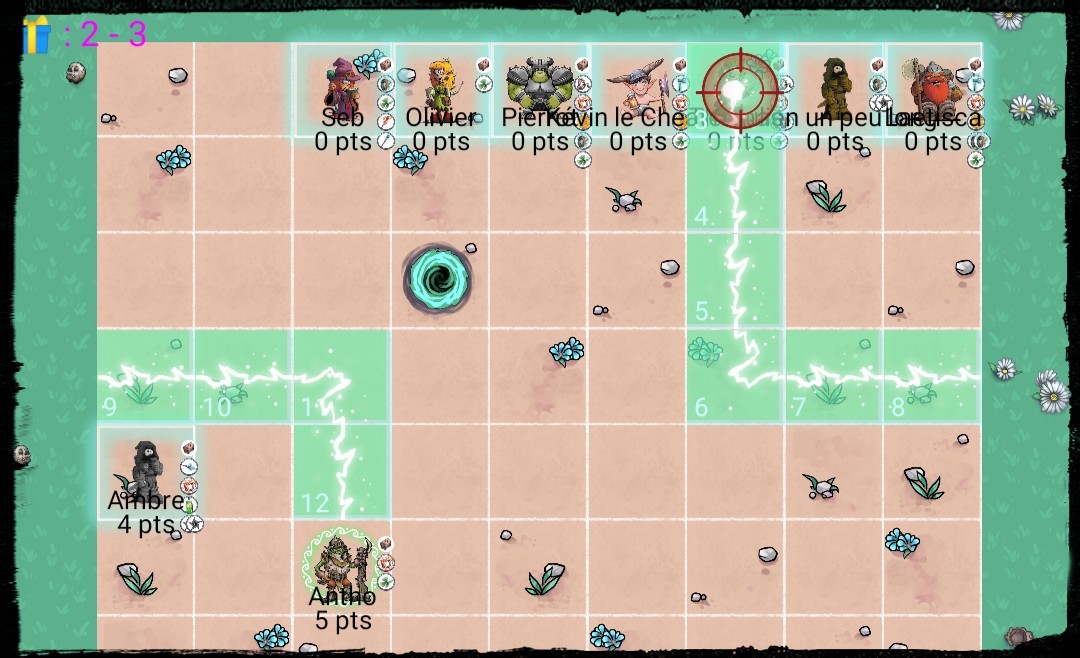
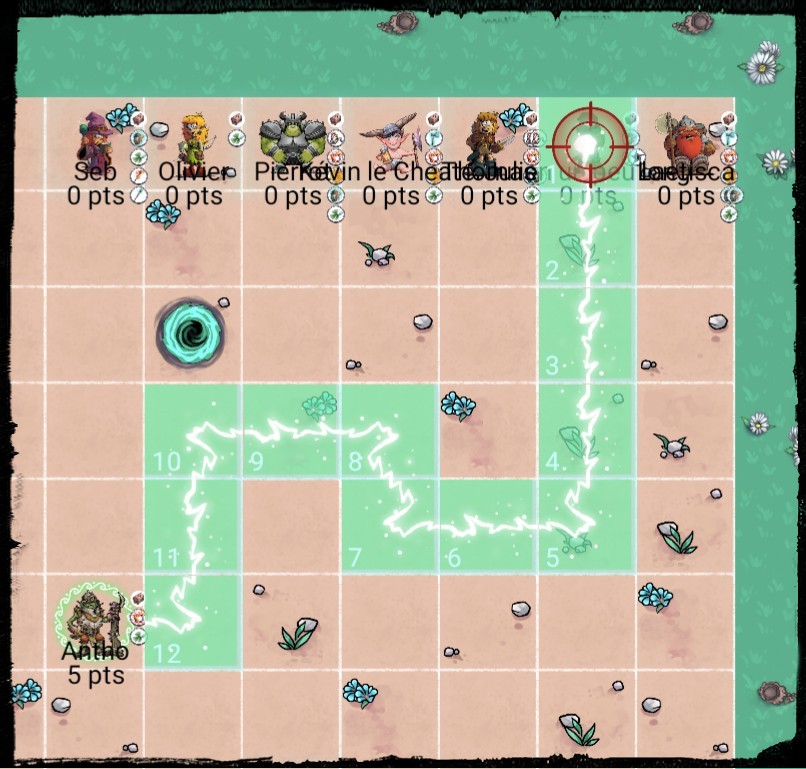
 . Si la cible est une barrière ou un piège, il est détruit.
. Si la cible est une barrière ou un piège, il est détruit. Lance magique :
Lance magique : 
 cases.
cases.
 . Si la cible est une barrière ou un piège, il est détruit.
. Si la cible est une barrière ou un piège, il est détruit.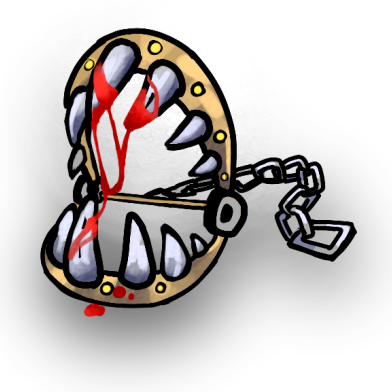 Piège pas vraiment magique :
Piège pas vraiment magique :  .
. ,
hache
,
hache  , boule de feu
, boule de feu 
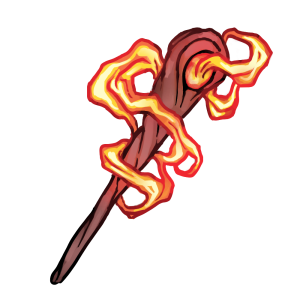 ).
).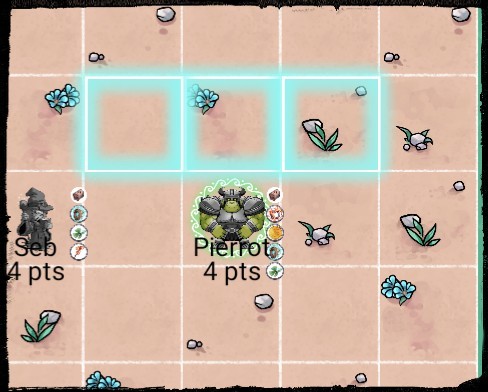
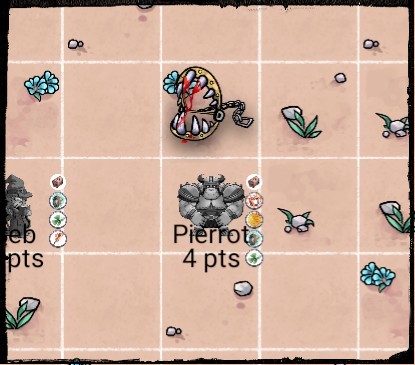
 Trèfle à trois feuilles et demi :
Trèfle à trois feuilles et demi : 
 Bouclier magique :
Bouclier magique :  ou petit
ou petit
 ).
). Pièce d'or :
Pièce d'or :  1 pièce : 1 case
1 pièce : 1 case
 2 pièces : 3 case (=1+2)
2 pièces : 3 case (=1+2)

 3 pièces : 6 case (=1+2+3)
3 pièces : 6 case (=1+2+3) Bouteille de produit anti-sportif :
Bouteille de produit anti-sportif : 
 cases.
cases. Seringue de produit anti-sportif :
Seringue de produit anti-sportif : 
 cases.
cases.

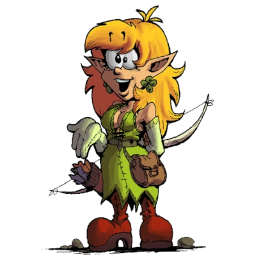 L'elfe :
L'elfe : : 25%
: 25% : 20%
: 20% après un lancer de
DKDO
après un lancer de
DKDO  seront toujours des objets non offensifs.
seront toujours des objets non offensifs.
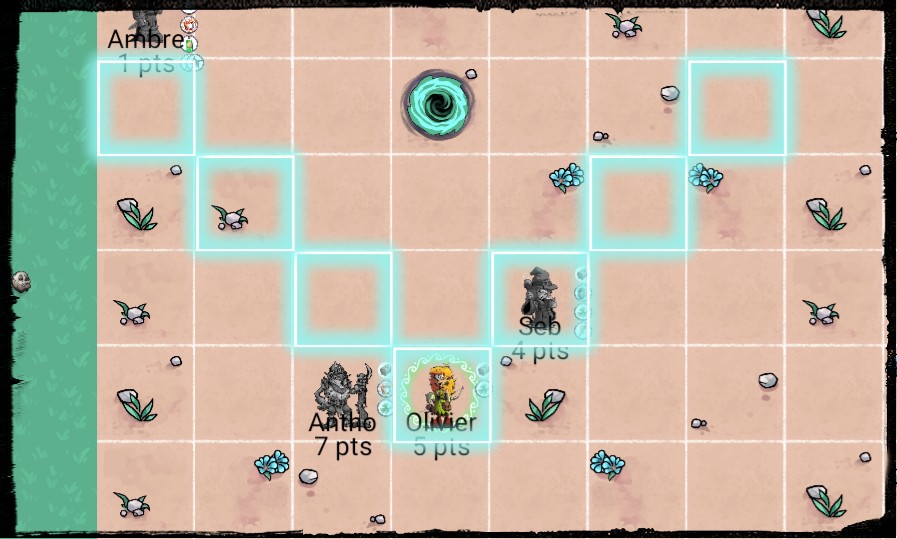
 est gratuite pour l'elfe
(ne compte pas comme une utilsation d'objet en phase d'action).
est gratuite pour l'elfe
(ne compte pas comme une utilsation d'objet en phase d'action).
 dans un coffre, il obtient également
une lance magique
dans un coffre, il obtient également
une lance magique  . De plus ces dernières ne comptent pas dans sa limite d'objets actifs transportables.
. De plus ces dernières ne comptent pas dans sa limite d'objets actifs transportables.


 et seuls les deux meilleurs résultats (après utilisation
éventuelle de
et seuls les deux meilleurs résultats (après utilisation
éventuelle de 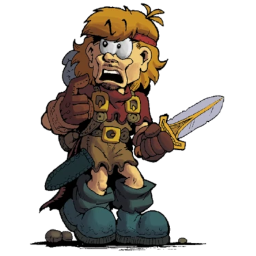 L'humain :
L'humain : : 50%
: 50% : 20%
: 20% après un lancer de
DKDO
après un lancer de
DKDO  seront toujours des objets offensifs.
seront toujours des objets offensifs.
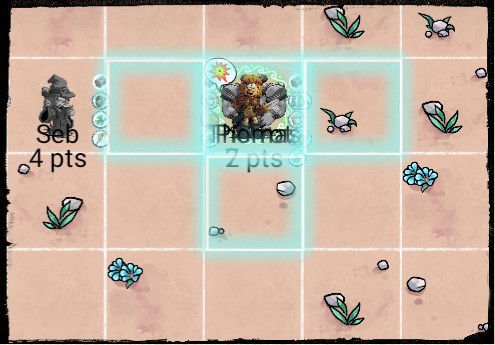
 Le nain :
Le nain : : 50%
: 50% : 30%
: 30% après un lancer de
DKDO
après un lancer de
DKDO  seront toujours des objets non offensifs.
seront toujours des objets non offensifs.
 . S'il devait subir un
. S'il devait subir un 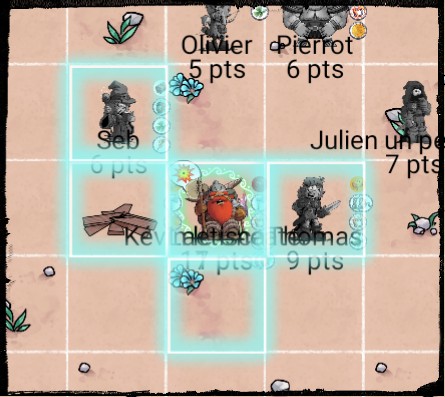
 Le gobelin :
Le gobelin : : 30%
: 30% : 20%
: 20% après un lancer de
DKDO
après un lancer de
DKDO  seront toujours des objets non offensifs.
seront toujours des objets non offensifs.
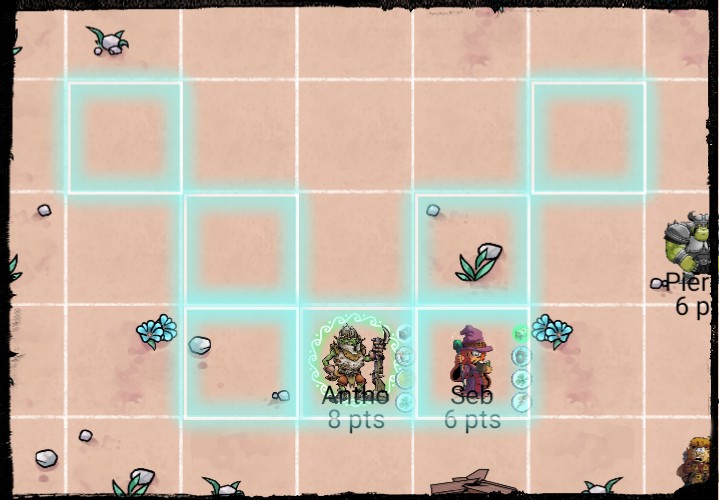
 dans un coffre, il obtient également
un piège
dans un coffre, il obtient également
un piège  . De plus ces derniers ne comptent pas dans sa limite d'objets actifs transportables.
. De plus ces derniers ne comptent pas dans sa limite d'objets actifs transportables.
 est gratuite pour le gobelin
(ne compte pas comme une utilsation d'objet en phase d'action).
est gratuite pour le gobelin
(ne compte pas comme une utilsation d'objet en phase d'action).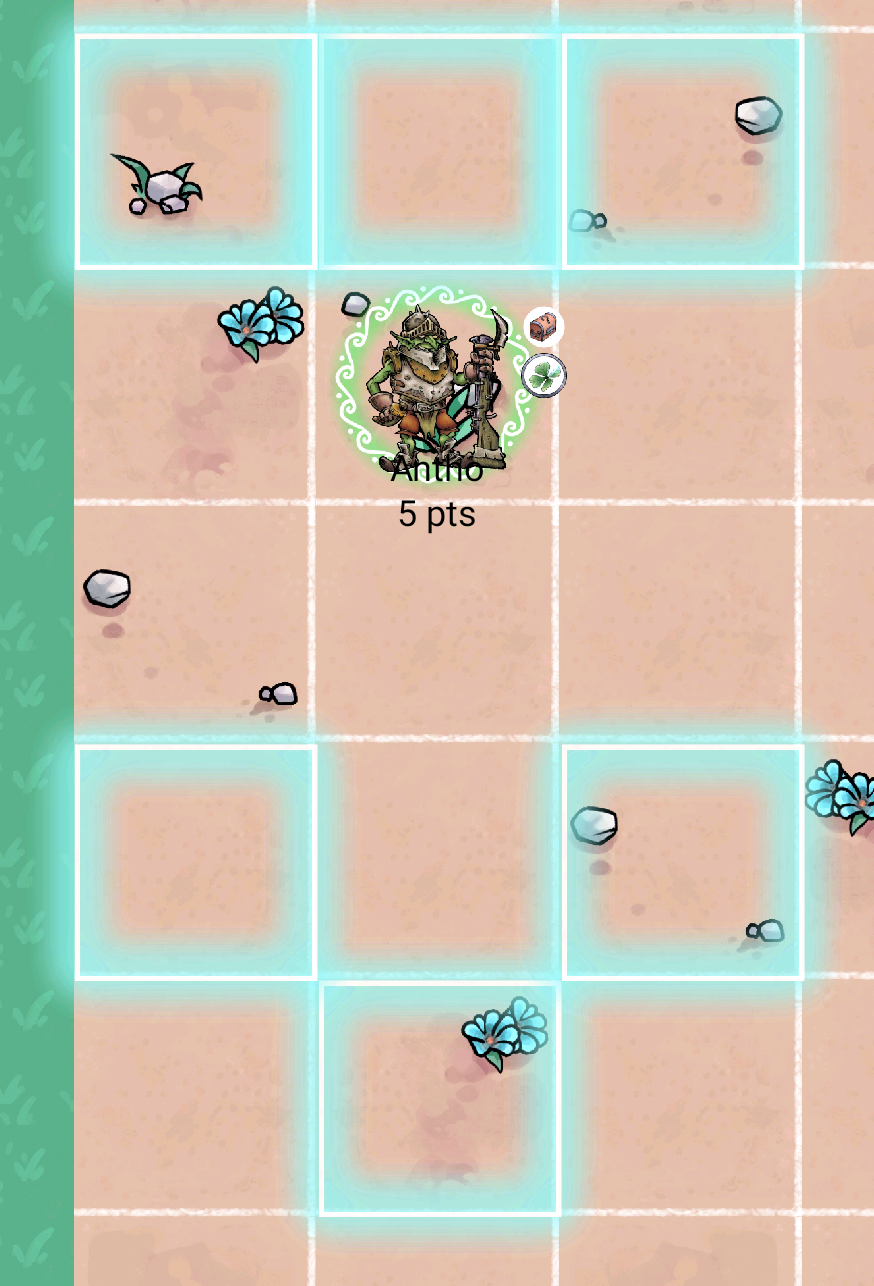
 L'orc :
L'orc : : 20%
: 20% : 60%
: 60% après un lancer de
DKDO
après un lancer de
DKDO  seront toujours des objets offensifs.
seront toujours des objets offensifs.
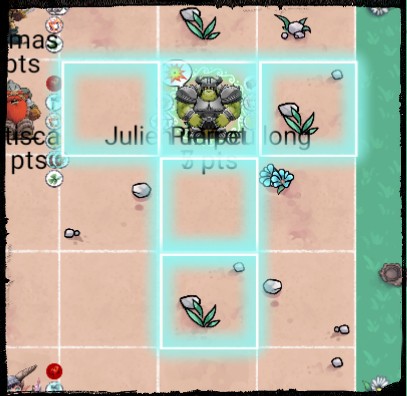
 L'homme-bête :
L'homme-bête : : 40%
: 40% : 25%
: 25% après un lancer de
DKDO
après un lancer de
DKDO  seront toujours des objets offensifs.
seront toujours des objets offensifs.

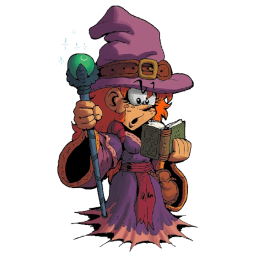 La magicienne :
La magicienne : : 30%
: 30% : 20%
: 20% après un lancer de
DKDO
après un lancer de
DKDO  seront toujours des objets non offensifs.
seront toujours des objets non offensifs.
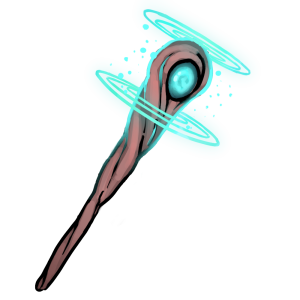 et d'une baguette de feu
et d'une baguette de feu  .
.  Baguette de téléportation : la magicienne peut utiliser cette baguette pour se téléporter deux cases devant elle, ou sur l'une des deux cases en diagonale devant elle.
Baguette de téléportation : la magicienne peut utiliser cette baguette pour se téléporter deux cases devant elle, ou sur l'une des deux cases en diagonale devant elle.
 Baguette de feu : projectile magique pouvant atteindre 2 cibles maximum, d'une portée de 8 cases. La trajectoire de la boule de feu doit forcément se situer devant la magicienne (la boule de feu ne peut pas partir vers l'arrière).
Inflige des
Baguette de feu : projectile magique pouvant atteindre 2 cibles maximum, d'une portée de 8 cases. La trajectoire de la boule de feu doit forcément se situer devant la magicienne (la boule de feu ne peut pas partir vers l'arrière).
Inflige des  et/ou détruits les barrières.
et/ou détruits les barrières.
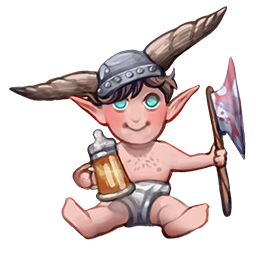 Le bébé hybride :
Le bébé hybride : : 45%
: 45% : 5%
: 5% après un lancer de
DKDO
après un lancer de
DKDO  seront toujours des objets non offensifs.
seront toujours des objets non offensifs.
 Boire un biberon de bière : le bébé lance deux dés "bière" pendant la phase de déplacement à la place des 2D6 (chacun de ces dés possède 6 faces numérotées de 2 à 7).
Boire un biberon de bière : le bébé lance deux dés "bière" pendant la phase de déplacement à la place des 2D6 (chacun de ces dés possède 6 faces numérotées de 2 à 7).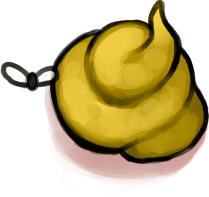 Faire une crotte : le bébé dépose délicatement une crotte sur la case située derrière lui
après la phase de dérapage. Une crotte compte comme un piège infligeant un
Faire une crotte : le bébé dépose délicatement une crotte sur la case située derrière lui
après la phase de dérapage. Une crotte compte comme un piège infligeant un  .
.
 à tous les adversaires présents à 6 cases ou moins de sa position.
à tous les adversaires présents à 6 cases ou moins de sa position.
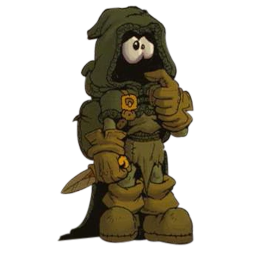 Le voleur :
Le voleur : : 20%
: 20% : 20%
: 20% après un lancer de
DKDO
après un lancer de
DKDO  seront toujours des objets non offensifs.
seront toujours des objets non offensifs.
 (probabilité de succès : 40%). En cas de réussite le piège est retiré du plateau
et ajouté aux objets du voleur. En cas d'échec, il est subi de façon ordinaire.
(probabilité de succès : 40%). En cas de réussite le piège est retiré du plateau
et ajouté aux objets du voleur. En cas d'échec, il est subi de façon ordinaire.
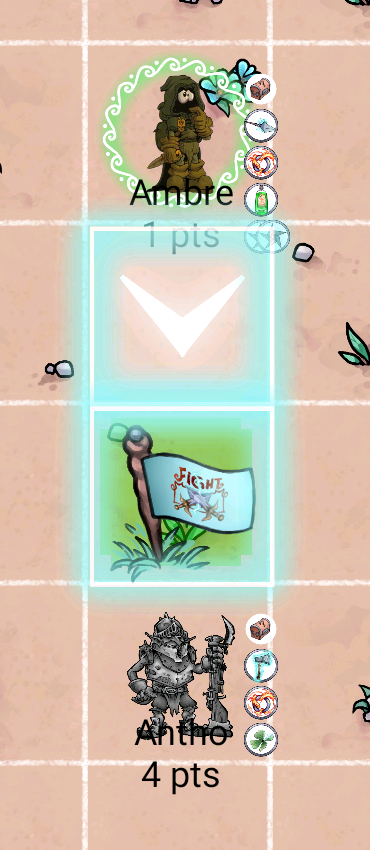
 (probabilité de succès : 40%).
En cas de réussite, un objet est volé à l'adversaire. En cas d'échec, le voleur perd deux points.
(probabilité de succès : 40%).
En cas de réussite, un objet est volé à l'adversaire. En cas d'échec, le voleur perd deux points. 
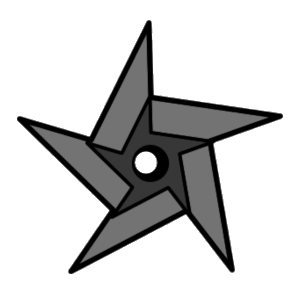 Etoiles de lancer : le voleur débute la partie avec un certain nombre d'étoiles de lancer. Ce sont des objets actifs qui s'utilisent comme des lances
Etoiles de lancer : le voleur débute la partie avec un certain nombre d'étoiles de lancer. Ce sont des objets actifs qui s'utilisent comme des lances
 de portée 4. Leur utilisation est gratuite. Les étoiles de lancer ne peuvent pas casser les barrières mais les
de portée 4. Leur utilisation est gratuite. Les étoiles de lancer ne peuvent pas casser les barrières mais les 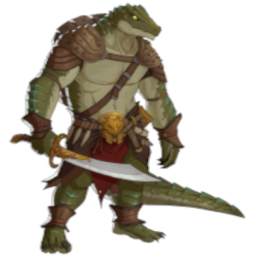 L'homme-lézard :
L'homme-lézard : : 50%
: 50% : 25%
: 25% après un lancer de
DKDO
après un lancer de
DKDO  seront toujours des objets offensifs.
seront toujours des objets offensifs.

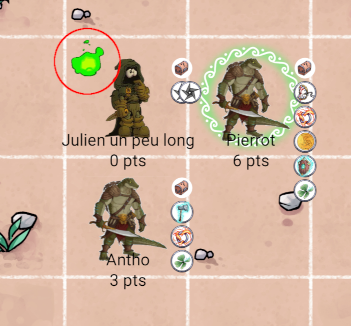
 et gagne 1 point de morsure. Il ne gagne pas de point de combat.
et gagne 1 point de morsure. Il ne gagne pas de point de combat.
